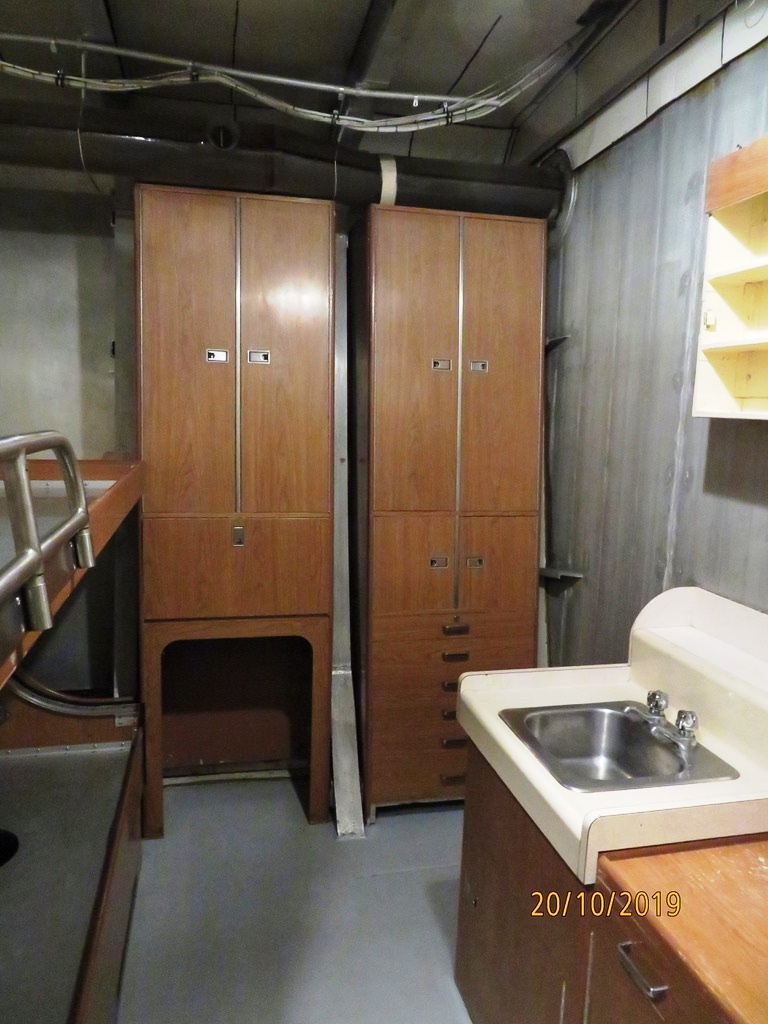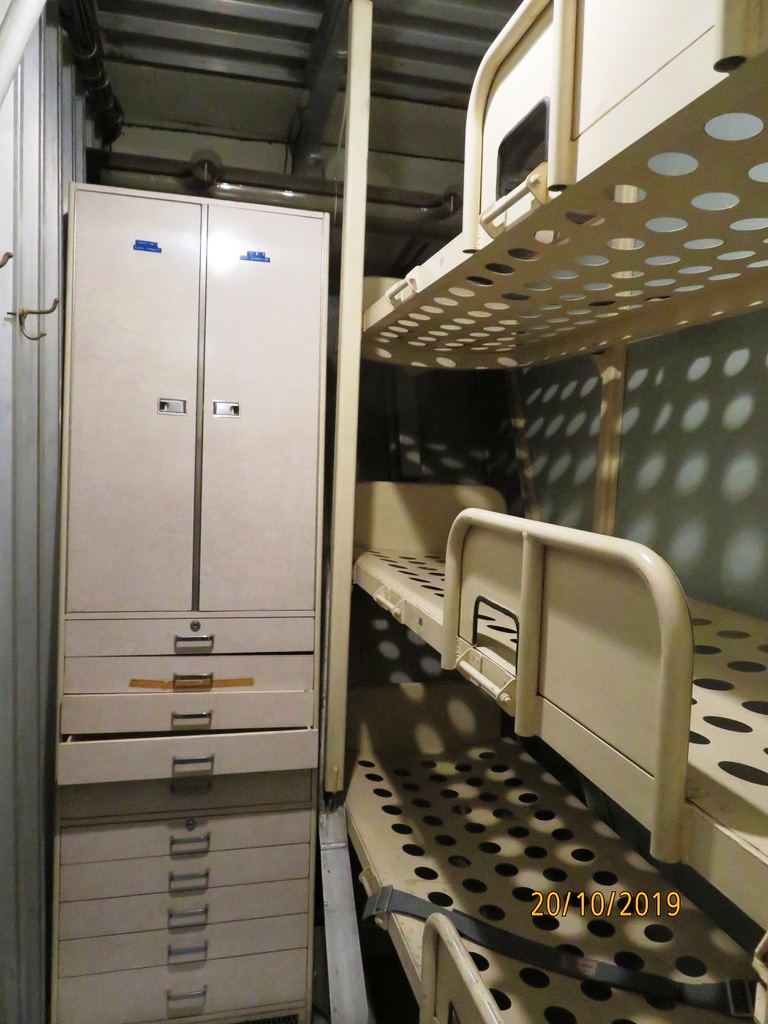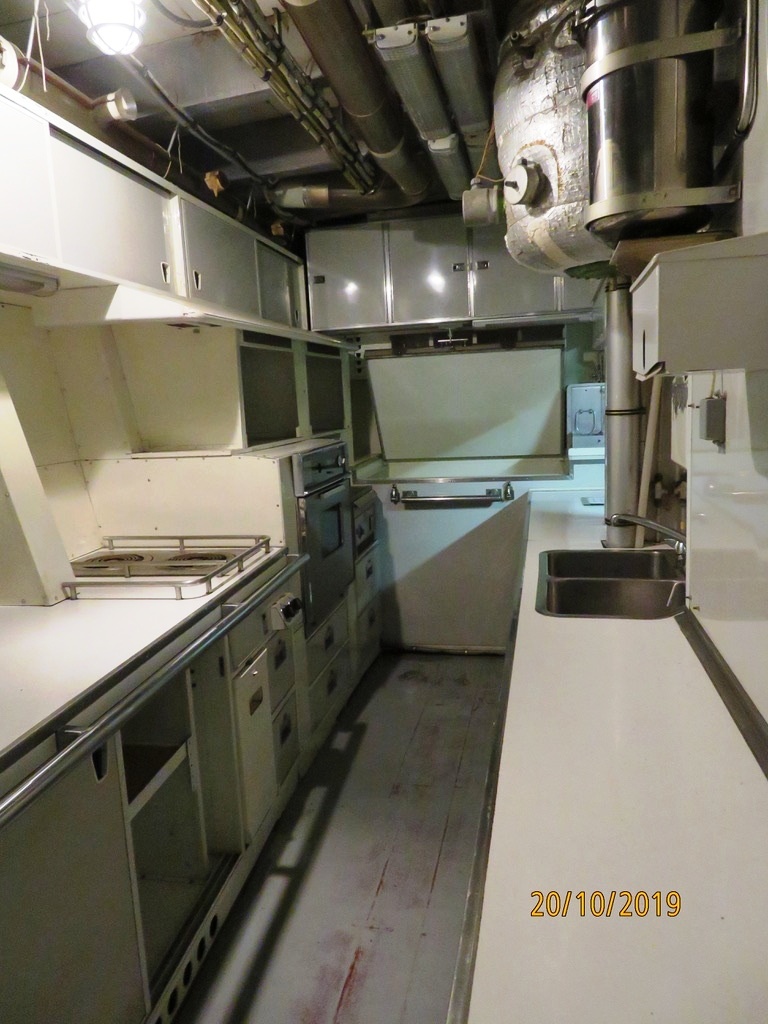 |
| Officers quarters |
 |
| Petty Officer's compartment. |
 |
| The Galley contained a microwave oven , a conventional stove and refrigerator. When it was difficult to cook, the crew ate prepared airline-type meals. Conventional meals were cooked when the conditions allowed it. The ship was provisioned to be at sea for a maximum of 14 days. |
NOTE #1The article on Bras D'or which appeared in Warship International No.2 1982, says that the two seats on the bridge were occupied by the Captain (left) and a helmsman (right). The same goes for the book "The Flying 400" An unconfirmed report says that the Captain's place would normally be in the Operations area. Can anyone clarify this? Contact: jerry.proc@sympatico.ca
Credits and References:
1) Jacques Hamel. - Founding President of the former Musée Québécois de la radio. Web: http://www.va2mqr.ca
2) Pat Barnhouse. - Assistant Project Manager for the Fighting Equipment (FE) .on the Bras D'or
3) Canadian Warships Since 1956. Page 36. Roger G. Steed. Vanwell Publishing 1999Nov 15/23